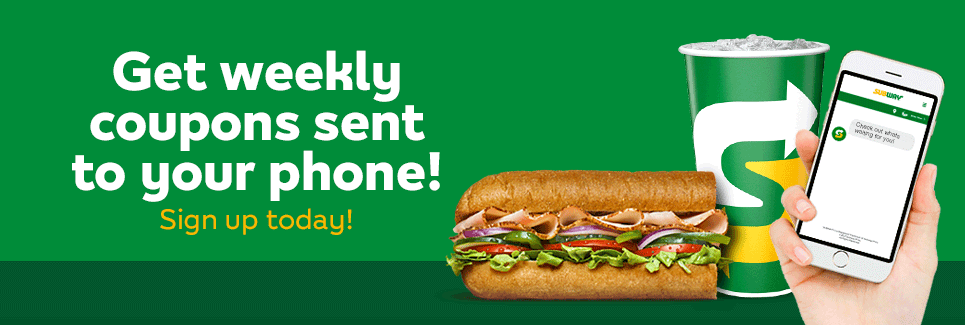
Text messaging is an effective way to reach customers.
More of our customers than ever before are using SMS text message marketing campaigns as part of their digital marketing efforts.
Examples include:
- Reminders
- Offers and deals
- Promotions
- Affiliate programs
Why text messages?
A well-targeted and segmented email achieves about a 21 percent open rate. Compare that to a nearly 90 percent open and response rate for text messages.
These aren’t just our customers’ experiences:
- Mobile Marketing Watch reports that text messages have a 98 percent open rate.
- Velocify reports that texts have a 45 percent response rate.
Text messages are direct, short and immediate. Unlike emails that tend to be long and easy to ignore, it’s difficult to ignore a text.
So, how do you effectively use text messaging as part of your digital marketing? Here are eight tips and recommendations for effective text messaging campaigns.
1. Get permission and allow easy opt-out
To send a text message, you must have permission. You can obtain this permission when a new customer signs up or agrees to an offer.
For example, several of our customers provide an opt-in for customers when they attend a class or take part in a free service.
An easy way to opt potential customers in is with an offer. For example, Subway offers coupons for discounts each week, but you have to opt-in to receive them.

And while agreeing to receive text messages should be easy, so should opting out of them.
The most common opt-out option for text messages is by replying with “STOP.”
2. Segment your audience
The most effective campaigns use segmentation to categorize the audience into related groups.
For example, depending upon the data you have for your audience, you can create segments by age, time zone, type of customer, etc. Then, you can craft specific and targeted messages for each group.
Generally speaking, you’ll have much more success with text messaging campaigns that target millennials (people born roughly between 1981 and 1996) than you will with emails.
We recommend segmenting your audience and then A/B testing different channels (email, text messaging, push alerts, etc.).
An “A/B test” is when you create two different versions of one piece of content, with changes to a single variable. You then deliver these two versions to two audiences (of about the same size) and analyze which one performed better over a specific period of time.
Each medium you test will deliver different results.
3. Personalize the message
It’s easy to find services that send thousands of text messages to a list of your customers’ mobile numbers.
But what can make text message marketing even more effective is when each message is personalized for the recipient.
For example, with DailyStory, you can send an event reminder that includes the first name for every customer you’re reaching. That approach helps cut through the noise for many people.
4. Time your delivery
Once you craft the perfect text message, think about when it makes the most sense for your recipient to receive it.
Similar to email, Mondays typically have a lower response rate. And unlike emails, you ideally want the message delivered at a point in time where the recipient can take action. That means that early mornings or the end of the workday (like 4 to 7 p.m.) aren’t typically very good times.
We recommend scheduling messages Tuesday through Thursday between the hours of 10 a.m. and 5 p.m. (scheduled for the timezone of the recipient, of course).
5. Track open and click rates
Just as you would with an email campaign, you want to track the open and click rates of your text messages.
You can then use the data from opens, clicks and opt-outs to finetune future messages. You can compare your performance against industry-standard benchmarks to see how you perform against industry averages.
Typically, anything less than a 50 percent open rate and a 15 percent click rate is considered underperforming.
6. SMS is powerful but isn’t free
While not expensive, there is a per-message fee to send each text message. So, it’s important you understand how to optimize your costs when you send thousands of text messages.
Text messaging was originally pioneered by Nokia. The original text message specification restricted messages to a certain set of characters and a length of 160 characters.
Telecommunication companies still enforce these restrictions and charge a fee per message.
Messages that exceed 160 characters or include non-standard characters, such as an emoji, can cause the message size to exceed 160 characters and increase the message cost.
Read more about how text message costs are calculated.
7. Include a clear call to action
While you need to keep your message short, always include a call to action (CTA).
What is it that you want the recipient of your text message to do? Is there a link to click, a coupon to use or an upcoming event they need to be aware of?
Ensuring you have a clear CTA also makes your text message valuable. Coupling this with some urgency, such as a date upon which the message expires, can also improve your click and open rates.
And it should go without saying: Keep your message clear, short and to the point.
Below are some tips on great CTAs for your text messages:
- Show this text: “Show this text when you check out at our store to get 15% off.”
- Click here: “Click here to get your 20% off coupon.”
- Reply to enter: “Reply with ‘Black Friday’ to claim your Black Friday discount.”
- Text-to-Vote: “Text 1 for agree, text 2 for disagree. Your vote matters!”
- Buy now: “Text ‘BUY’ to purchase, and we’ll schedule your delivery.”
8. Think omnichannel
Text messaging is an important part of your marketing strategy, but it should not be the only channel you use to reach your customers.
Instead, use a platform such as DailyStory to build an omni-channel marketing strategy across text messaging, social media, email, push notifications, ad retargeting and more.
Reach your customers across all the channels they interact with.
